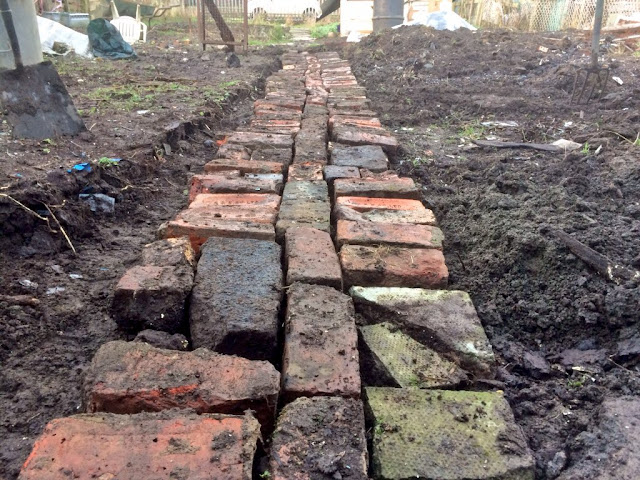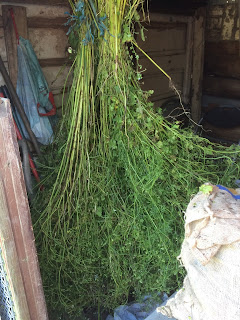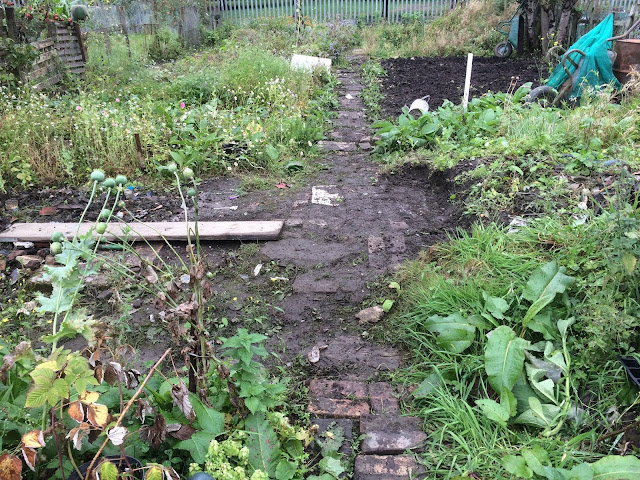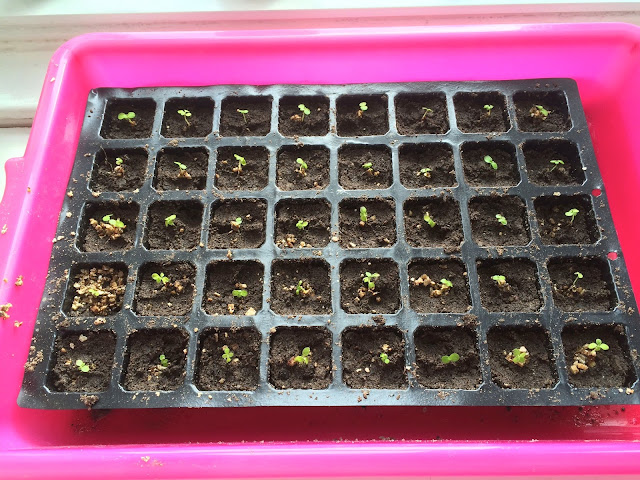2017 Crop Rotation Latest; Chickens
No. 1 bed: spuds; No. 2 bed: vetch ; No. 3 bed: carrots & onions; No. 4 bed: brassicas No. 5 bed: vetch . Mind, all of the beds have to be riddled. So, for example, when I lift the garlic from bed 3, I'll riddle that area before planting carrots there. And in bed 2, I'll gradually dig in the vetch, riddle the soil, and then plant another green manure on the riddled ground. And the rotation can proceed now in a clockwise direction, with a four bed system, (spuds, peas, onions/carrots, brassicas). The 5th bed will be a green manure for now, but eventually I want to introduce chickens into the rotation. To do that, I need to build a chicken house and run which is the right size for the beds, and which I can disassemble, move, and reassemble all myself in half a day. I'm thinking 10-12 chickens, enough to get all our eggs and a chicken for the roast once a month at least. This is several years away, but you heard it here first. The benefits of a chicken run in
























